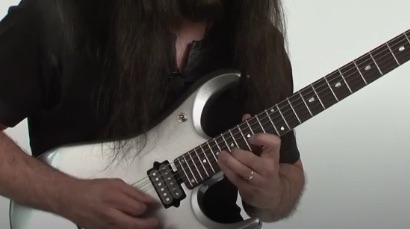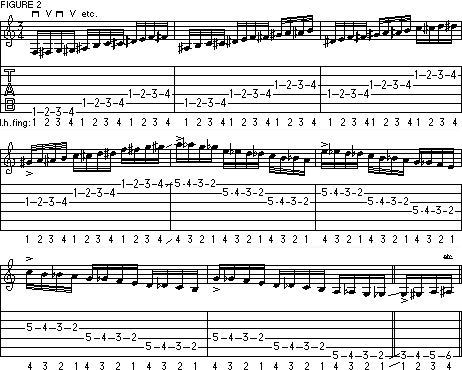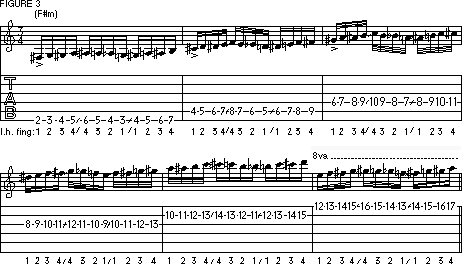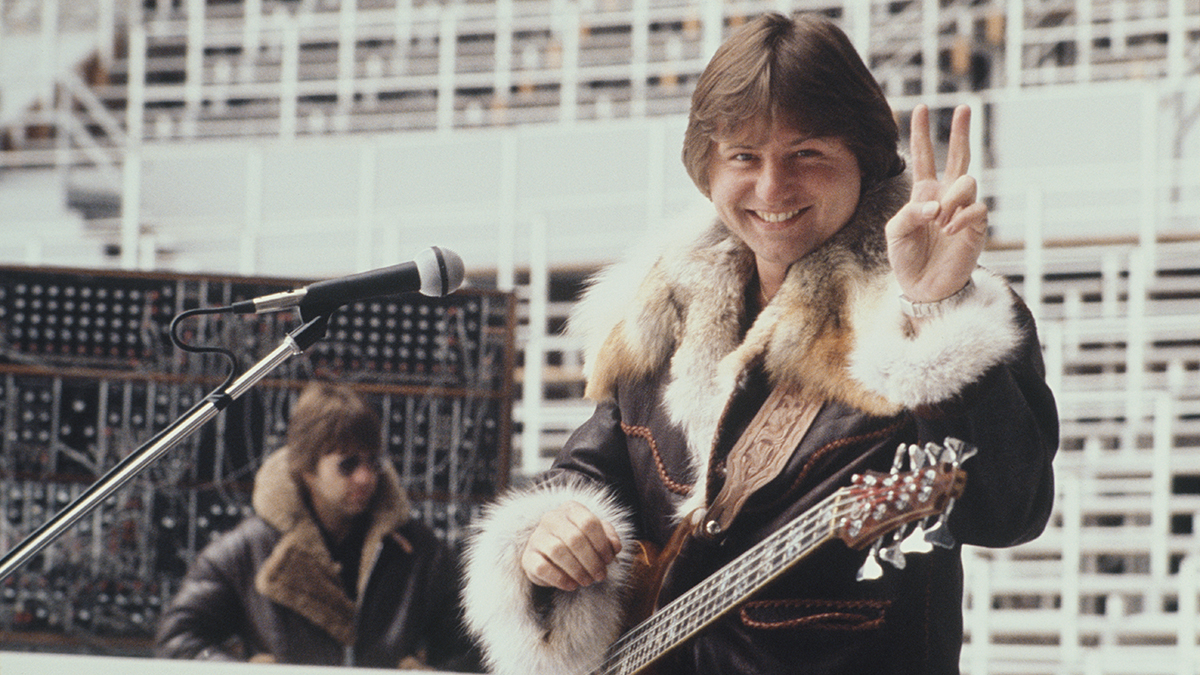12 Tones to Glory: Utilizing the Chromatic Scale
John Petrucci teaches you how to use the chromatic scale as a melodic device to add color to your playing.

This lesson originally appeared in the magazine as part of John Petrucci's "Wild Stringdom" column.
Before Dream Theater took off I used to teach a lot, and one of the things my students often asked me was how to apply the chromatic scale to practical playing situations. You see, their other teachers would give them chromatic warm-up exercises without providing any explanation of how important and versatile this scale actually is. For the next few months, I'd like to show you how to use the chromatic scale, not just as a tool to build chops but as a melodic device to add color to your playing.
FIGURE 1 shows the chromatic scale in the 1st position, beginning on F. Since the chromatic scale is built on consecutive half-step intervals (and therefore contains all 12 tones used in Western music), it has no true tonal center. This means that, used judiciously, it can fit over any chord.

Before you can apply chromatic ideas to scales and arpeggios, you have to get the chromatic scale itself under your fingers. You should learn it up and down the neck, and become comfortable with the fingerings. Here are a couple of chromatic exercises that will build up your technique and get you moving all over the fingerboard. Once you master the technique, applying it will be a lot easier.
FIGURE 2 is a good chops-building exercise. It doesn't contain all the notes of a chromatic scale (not every half-step is included), but it has enough chromatic elements to get you started. Practice this exercise with a metronome, using alternate picking. Start at a slow tempo (60 beats per minute) and gradually increase the speed. Since the notes fall in groups of four, you can accent the first note of each string or, as I do, of each measure. I do this because it helps me solidify the time; as a result, my speed and precision improve.

Once you get FIGURE 2 down, try tackling FIGURE 3. This exercise is great because it gets you thinking laterally along the neck — an invaluable approach to breaking away from position playing. (Haven't you been wanting to go beyond those pentatonic boxes for a while now?) Here's the deal: first, start on F# on the low E string and play four chromatic notes up; shift up a half step (one fret) with your pinky (you're now in the 3rd position) and play four chromatic notes down; then shift up a half step (to the 4th position) with your index finger and play four chromatic notes up again. That's the pattern. Then, keeping your hand in the 4th position, jump over to the A string and start all over again. By the time you finish the pattern on the high E string, you'll be in the 14th position!

FIGURE 3a is just FIGURE 3 played in reverse, descending to the 2nd position. Follow the left-hand fingerings indicated beneath the tablature and you shouldn't have a problem. Both figures sound good over F#m, but they can work over any chord. Experiment.
All the latest guitar news, interviews, lessons, reviews, deals and more, direct to your inbox!

